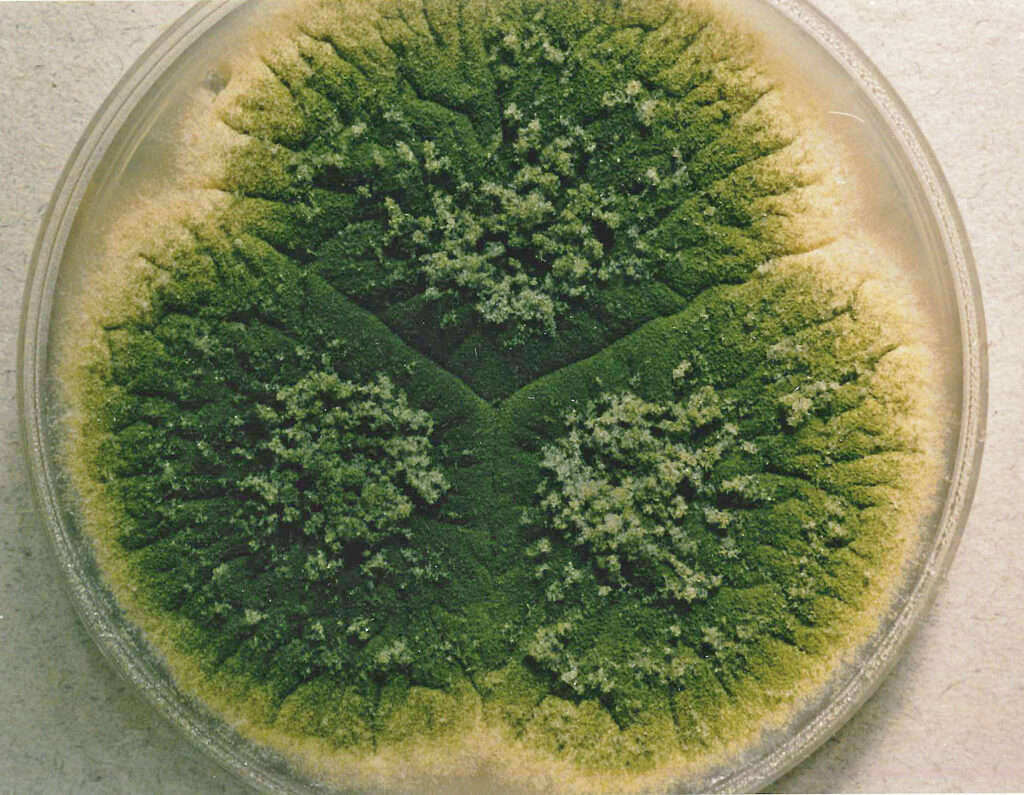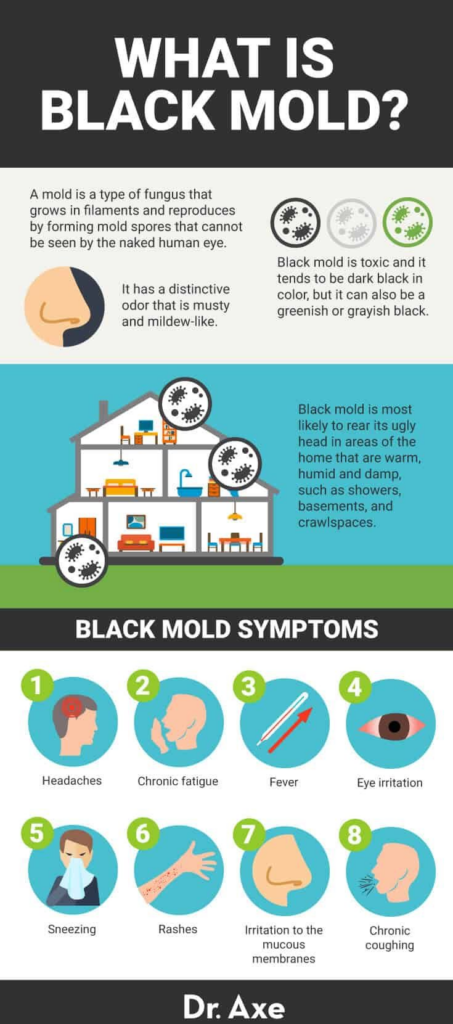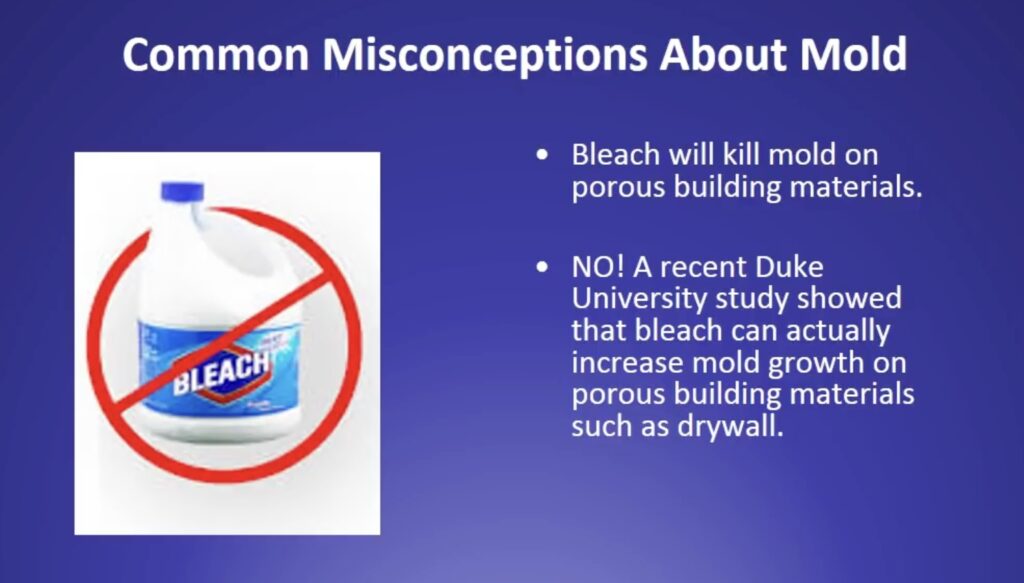I got this great question from a follower on my Instagram: “Hi Mark, I was wondering if you’d touch on mold in foods. I recently bit into a Trader Joe’s date and realized I was eating back mold. I am wondering where I can test what kind of mold I have in my food? Would you happen to know how to test specific molds on food and how to test mold in the body?”

Introduction: The Hidden Dangers Lurking in Your Pantry
Mold. It’s the last thing anyone wants to find in their food, yet it’s more common than you might think. From the loaf of bread on your counter to the fruits and vegetables in your fridge, mold can appear anywhere—and the consequences of consuming it can range from mild discomfort to severe health risks. In this in-depth guide, we’ll uncover everything you need to know about mold in food, the types that are most dangerous, and how you can protect yourself and your family. Plus, we’ll share how to boost your immune system with natural supplements, helping you stay resilient against the potential harms of mold exposure.
What is Mold and How Does It Grow in Food?
Mold is a type of fungus that thrives in warm, moist environments. It spreads through airborne spores, which can land on food and begin to grow, sometimes in a matter of hours. Mold growth on food is more than just an unsightly blemish; it can be a sign of underlying contamination that poses serious health risks.
Common Foods Prone to Mold Growth
1. Bread and Baked Goods: Due to their high moisture content and porous structure, bread and baked goods are particularly susceptible to mold.
2. Fruits and Vegetables: Fresh produce, especially those with high water content like berries and cucumbers, are common targets for mold.
3. Dairy Products: Cheese, yogurt, and other dairy items can develop mold if not stored properly.
4. Nuts and Grains: Mold can grow on nuts and grains, especially when stored in humid conditions.
The Most Dangerous Types of Mold in Food
Not all molds are created equal. While some are relatively harmless, others can produce toxic substances known as mycotoxins that pose significant health risks.
1. Aspergillus: The Silent Killer in Grains and Nuts

One of the most notorious molds is Aspergillus, particularly the species that produce aflatoxins. Aflatoxins are among the most potent carcinogens known and have been linked to liver cancer, especially in areas where contaminated grains and nuts are a dietary staple.

2. Penicillium: The Double-Edged Sword
While some species of Penicillium are used to make life-saving antibiotics, others can spoil food and produce harmful mycotoxins. Penicillium can be found on a variety of foods, including fruits, bread, and cheese.

3. Cladosporium: The Common Culprit in Your Fridge
Cladosporium is less toxic than other molds but can still cause allergic reactions in sensitive individuals. It commonly grows on refrigerated foods, such as fruits and vegetables.

4. Stachybotrys (Black Mold): The Nightmare Scenario
Black mold, or Stachybotrys, is rarely found in food but can be extremely dangerous when present. It’s more commonly associated with water-damaged buildings, where it can produce mycotoxins that are harmful when inhaled or ingested.
Health Risks of Consuming Moldy Food
Consuming moldy food can lead to a range of health issues, from mild to severe, depending on the type of mold and your individual sensitivity.

1. Mycotoxin Poisoning
Certain molds, like Aspergillus, produce mycotoxins that can lead to poisoning. Symptoms can include nausea, vomiting, and in severe cases, liver damage and cancer.

2. Allergic Reactions
Even molds that don’t produce mycotoxins can trigger allergic reactions in some people. Symptoms can range from sneezing and coughing to severe asthma attacks.

3. Infections
Though rare, some molds can cause infections, particularly in immunocompromised individuals. These infections can be difficult to treat and may require medical intervention.
What to Do If You Find Mold in Your Food
So, you’ve just found mold on your food—what should you do? Here’s a quick guide:
1. Bread: Toss it. Bread is porous, and mold spores can spread beyond what’s visible to the eye.
2. Fruits and Vegetables: For firm produce like carrots and cabbage, cut away at least an inch around and below the moldy spot. For soft produce like berries, discard the entire batch.
3. Cheese: For hard cheeses, you can cut away the mold with a generous margin. Soft cheeses should be discarded entirely.
4. Chocolate and Snacks: If you find mold on processed snacks like a Trader Joe’s chocolate bar, it’s best to discard it and contact the manufacturer.
Can Heating or Toasting Kill Mold?
Many people wonder if they can simply toast moldy bread or heat food to kill mold. Unfortunately, while heat can kill mold spores, it does not destroy the mycotoxins that molds produce. Toasting or heating moldy food will not make it safe to eat and may even spread the toxins further.
Boost Your Immune System to Protect Against Mold Exposure

While avoiding moldy food is crucial, maintaining a strong immune system is your best defense against potential harm. A healthy immune system can help your body fight off the effects of mycotoxins and reduce your risk of infections or allergic reactions. Here are some natural supplements that can help boost your immune system:
1. Vitamin C: A powerful antioxidant, Vitamin C supports various cellular functions of the immune system. It’s essential for the growth and repair of tissues in your body.
2. Probiotics: A healthy gut is central to a strong immune system. Probiotics help balance the gut microbiome, preventing the overgrowth of harmful organisms like Candida.
3. Elderberry Extract: Elderberry has been shown to boost immune function and reduce the severity and duration of cold and flu symptoms.
4. Zinc: This mineral is crucial for the normal development and function of cells that mediate innate immunity, neutrophils, and natural killer cells.
5. Echinacea: Echinacea is a popular herb that has been shown to boost immune function and reduce the severity of colds.
Testing Mold in Food and the Body: What You Need to Know
If you’re concerned about mold in your food or potential mold exposure affecting your health, it’s important to know how to test for specific molds. In this guide, we’ll explore how you can test the type of mold in your food and the methods available for testing mold in the body.
Foods to Eat to Help Lower Mold in the Body

If you’re concerned about mold exposure and its effects on your body, diet can play a significant role in helping to manage and reduce the impact of mold. Certain foods can support detoxification, boost your immune system, and help your body combat the effects of mold exposure. Here are some foods to consider:
1. Garlic
- Why It Works: Garlic has powerful antifungal properties, thanks to a compound called allicin. It can help fight mold and yeast overgrowth in the body.
- How to Include It: Add fresh garlic to your meals, or take garlic supplements if you prefer a more concentrated form.
2. Cruciferous Vegetables
- Why It Works: Vegetables like broccoli, cauliflower, Brussels sprouts, and kale contain compounds that support liver detoxification, which is crucial for removing toxins like mycotoxins (toxins produced by mold) from the body.
- How to Include It: Incorporate a variety of cruciferous vegetables into your diet daily, whether steamed, roasted, or in salads.
3. Ginger
- Why It Works: Ginger has anti-inflammatory and antioxidant properties, which can help reduce the body’s reaction to mold toxins.
- How to Include It: Use fresh ginger in teas, smoothies, or meals, or consider ginger supplements.
4. Leafy Greens
- Why It Works: Leafy greens like spinach, kale, and arugula are rich in chlorophyll, which helps detoxify the body and reduce inflammation.
- How to Include It: Add leafy greens to salads, smoothies, or as a side dish to meals.
5. Turmeric
- Why It Works: Turmeric contains curcumin, a powerful anti-inflammatory and antioxidant compound that can help reduce the impact of mold toxins.
- How to Include It: Use turmeric in cooking, or take curcumin supplements for a concentrated dose.
6. Coconut Oil
- Why It Works: Coconut oil contains caprylic acid, which has antifungal properties that can help combat yeast and mold in the body.
- How to Include It: Use coconut oil for cooking, add it to smoothies, or take it by the spoonful as a supplement.
7. Probiotic-Rich Foods
- Why It Works: Probiotics help maintain a healthy gut microbiome, which is essential for keeping mold and yeast levels in check. Foods like yogurt, kefir, sauerkraut, kimchi, and other fermented foods are rich in beneficial bacteria.
- How to Include It: Incorporate a variety of fermented foods into your diet daily, or consider a high-quality probiotic supplement.
8. Fiber-Rich Foods
- Why It Works: Fiber helps to bind and eliminate toxins from the body through the digestive system. Whole grains, seeds, legumes, fruits, and vegetables are excellent sources of dietary fiber.
- How to Include It: Ensure that each meal includes a source of fiber, such as whole grains, fruits, or vegetables.
9. Green Tea
- Why It Works: Green tea is rich in antioxidants that support liver function and detoxification processes, helping to clear mold toxins from the body.
- How to Include It: Drink green tea daily, either hot or iced.
10. Water
- Why It Works: Staying well-hydrated is essential for flushing toxins out of the body. Water supports kidney function, which is critical in the detoxification process.
- How to Include It: Aim to drink at least 8 glasses of water a day, and more if you’re active or in a hot climate.
Foods to Avoid for lowering mold in your body
In addition to incorporating mold-fighting foods, it’s also important to avoid foods that can exacerbate mold exposure symptoms:
- Sugar and Refined Carbohydrates: These can feed yeast and mold in the body, making the problem worse.
- Processed Foods: Often contain preservatives and additives that can burden the detoxification system.
- Alcohol: Can be high in sugar and yeast, which can promote mold growth in the body.
By incorporating these mold-fighting foods into your diet and avoiding those that can exacerbate the problem, you can support your body’s natural detoxification processes and reduce the impact of mold exposure on your health. If you suspect you have been exposed to mold and are experiencing symptoms, it’s also important to consult with a healthcare professional for proper diagnosis and treatment.

Testing for Mold in Food
1. At-Home Mold Test Kits
Overview: While most at-home mold test kits are designed for environmental testing (like air or surface samples), some kits can test mold in food.
Procedure: These kits usually involve swabbing the food or placing a piece of the food in a testing medium. The sample is then sent to a lab for analysis.
Where to Find: You can purchase these kits online from retailers like Amazon or from specialized companies that offer mold testing services.
2. Professional Laboratory Testing
Overview: For more accurate identification, you can send a sample of the moldy food to a professional laboratory.
Procedure: The lab will analyze the sample using techniques like DNA sequencing or mycological identification to determine the specific type of mold.
Where to Find: Look for food safety laboratories or companies specializing in mycotoxin testing. Some well-known labs include Eurofins, ALS Global, and EMSL Analytical.
Testing for Mold in the Body
1. Urine Mycotoxin Test
Overview: This test measures the levels of mycotoxins (toxic substances produced by mold) in your urine.
Procedure: A urine sample is collected and sent to a specialized lab for analysis.
Where to Get It: You can order these tests online from companies like RealTime Labs or Great Plains Laboratory, or have your healthcare provider order the test for you.
2. Blood Tests
Overview: Blood tests can detect antibodies or immune responses to mold, indicating whether your body has been exposed to mold.
Procedure: Blood is drawn and analyzed in a lab for mold-specific IgE antibodies or other immune markers.
Where to Get It: These tests can be ordered by a healthcare provider and performed at a clinic or hospital lab.
3. Skin Prick Test
Overview: This allergy test can determine if you have a mold allergy, which could suggest chronic exposure to mold.
Procedure: Small amounts of mold allergens are pricked into the skin, and any reaction is observed.
Where to Get It: Performed by an allergist or a healthcare provider specializing in allergies.
4. Mold Culture Test
Overview: This test involves growing a mold culture from a sample taken from your body (such as a nasal swab or lung secretion).
Procedure: A healthcare provider collects the sample, and it’s sent to a lab to see if mold will grow.
Where to Get It: Typically done in a clinical setting, such as a hospital or specialized laboratory.
Preventing mold is key
Mold is a natural part of life as to make space for new life the old must be broken down, and mold is great at that. So we have to remember to cherish mold but also be aware that it’s not healthy to be exposed to all mold.
Consult a Mold Professional: If you suspect mold exposure, it’s essential to consult an expert. They can guide you to the appropriate tests and interpret the results in the context of your overall health.
Prevent Mold Growth: Proper food storage, humidity control, and regular cleaning can help prevent mold growth in your home and food.
The Best Way to Clean Mold in Your House: Effective Methods Without Bleach
Mold in your house can be more than just an eyesore; it can also pose serious health risks. If you discover mold in your home, it’s crucial to clean it up effectively to prevent it from spreading and to protect your health. Many people turn to bleach as their go-to mold cleaner, but using bleach can actually make the problem worse. Here’s why you should avoid bleach and what you should do instead.
Why You Shouldn’t Use Bleach to Clean Mold

Bleach is often touted as a powerful cleaning agent, but when it comes to mold, it’s NOT the best choice. Here’s why:
1. Bleach Doesn’t Penetrate Porous Surfaces: Mold often grows on porous materials like wood, drywall, and grout. While bleach may kill surface mold, it doesn’t penetrate deeply enough to kill the mold roots, which can cause the mold to return quickly.
2. Bleach Can Make Mold Worse: When bleach is applied to mold, it can cause the mold to release spores into the air. These spores can spread throughout your home, leading to more mold growth. Additionally, the water content in bleach can actually feed the mold, promoting its growth on porous surfaces.
3. Bleach Can Be Harmful to Your Health: The fumes from bleach can be irritating to the eyes, skin, and respiratory system. When bleach reacts with mold, it can create harmful gases that may exacerbate respiratory problems, particularly in those with asthma or allergies.
Safe and Effective Methods for Cleaning Mold
To effectively clean mold in your home, it’s important to use methods and products that are both safe and effective. Here’s how:
1. Use White Vinegar
Why It Works: White vinegar is mildly acidic and can kill up to 82% of mold species. It’s non-toxic and safe for use on most surfaces.
How to Use: Pour undiluted white vinegar into a spray bottle. Spray the affected area and let it sit for at least an hour. Scrub the area with a brush and wipe clean with water.
2. Apply Hydrogen Peroxide
Why It Works: Hydrogen peroxide is an antifungal, antiviral, and antibacterial solution that can kill mold. It’s also safe to use on various surfaces.
How to Use: Pour 3% hydrogen peroxide into a spray bottle. Spray the moldy area and let it sit for 10 minutes. Scrub the area to remove the mold and wipe clean with water.
3. Use Baking Soda
Why It Works: Baking soda is a mild, non-toxic cleaning agent that can kill mold and absorb moisture, which helps prevent mold from returning.
How to Use: Mix one-quarter of a tablespoon of baking soda with water in a spray bottle. Spray the moldy area and scrub with a brush. Rinse with water, then spray again and let it dry to prevent future mold growth.
4. Tea Tree Oil Solution
Why It Works: Tea tree oil is a natural fungicide that can effectively kill mold and prevent its recurrence. It’s also less toxic than chemical-based cleaners.
How to Use: Mix one teaspoon of tea tree oil with one cup of water in a spray bottle. Shake well and spray on the moldy area. Let it sit without rinsing.
5. Use Commercial Mold Cleaners
Why It Works: There are many commercial mold cleaners designed specifically for mold remediation. These products are often more effective than homemade solutions.
How to Use: Follow the instructions on the label, ensuring you wear protective gear like gloves and a mask.
Preventing Mold Growth
Cleaning existing mold is only half the battle. To prevent mold from returning, follow these tips:
1. Control Humidity: Mold thrives in humid environments. Use dehumidifiers and ensure proper ventilation in areas like bathrooms, kitchens, and basements.
2. Fix Leaks Promptly: Repair any leaks in your roof, walls, or plumbing as soon as possible to prevent moisture buildup.
3. Keep Surfaces Dry: Wipe down wet surfaces immediately, especially in bathrooms and kitchens.
4. Use Mold-Resistant Products: When renovating, use mold-resistant drywall, paint, and insulation in areas prone to moisture.
5. Monitor Indoor Plants: Overwatering plants can lead to mold growth. Use a mold inhibitor in the soil and avoid letting water accumulate in pots.
Mold cleaning
When it comes to cleaning mold in your house, it’s crucial to avoid using bleach, as it can exacerbate the problem. Instead, opt for safer, more effective methods like white vinegar, hydrogen peroxide, and baking soda. By using these solutions and taking preventative measures, you can keep your home mold-free and protect your health.
Conclusion: Stay Vigilant, Stay Healthy
Mold in food is a more serious issue than many people realize. By understanding the risks and knowing how to handle moldy food, you can protect your health and the health of your loved ones. And remember, a strong immune system is your best defense—so consider incorporating immune-boosting supplements into your diet today.
Discover more from
Subscribe to get the latest posts sent to your email.
